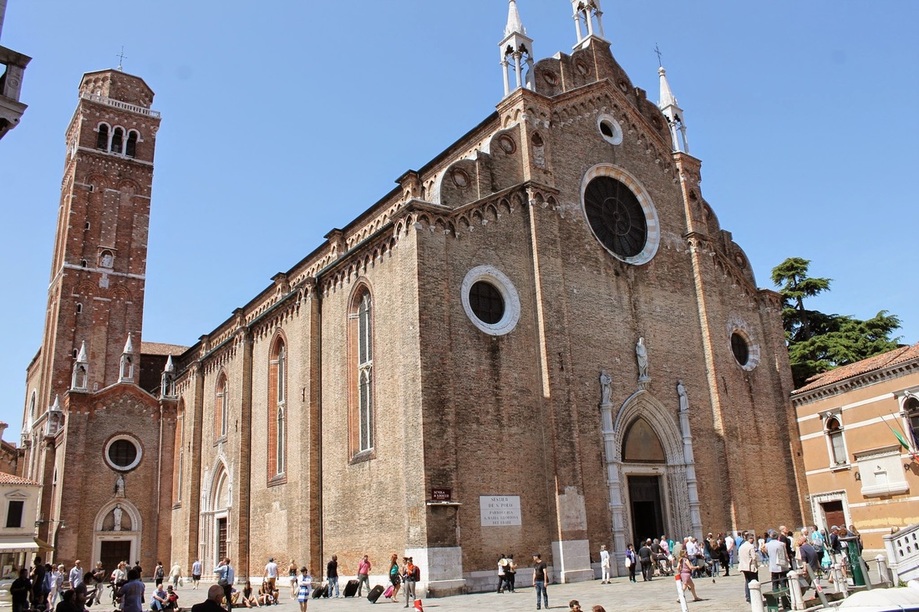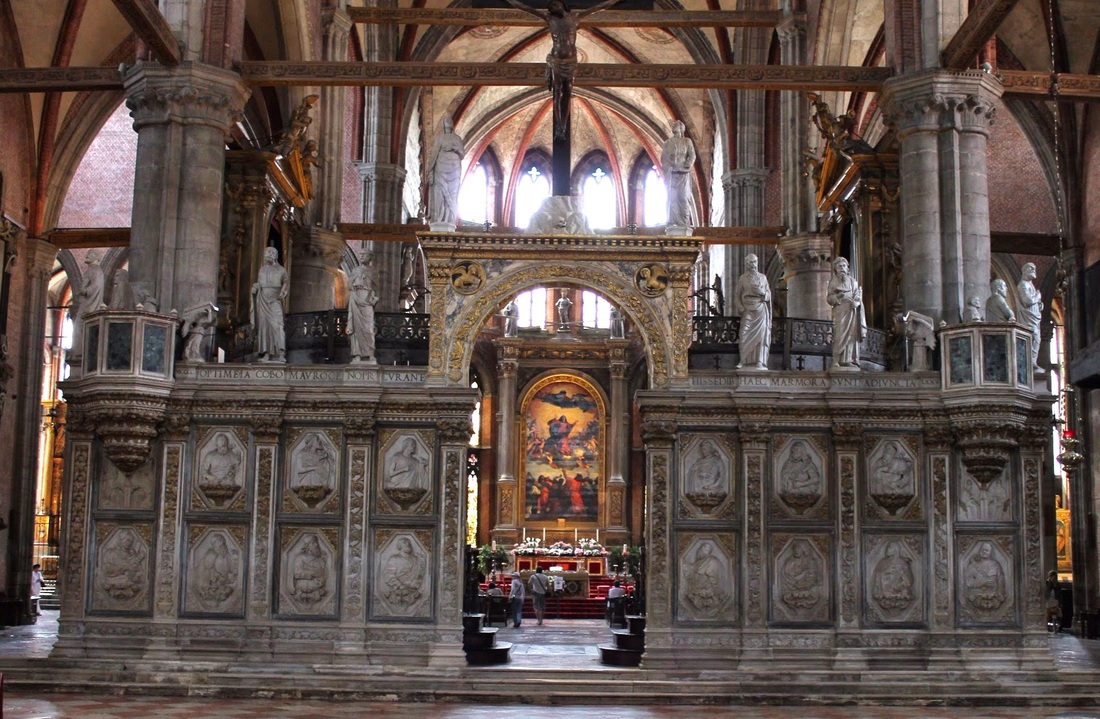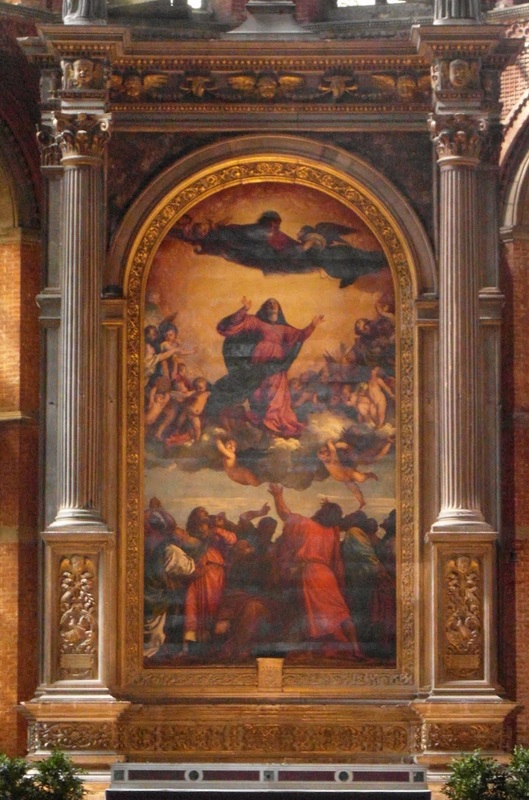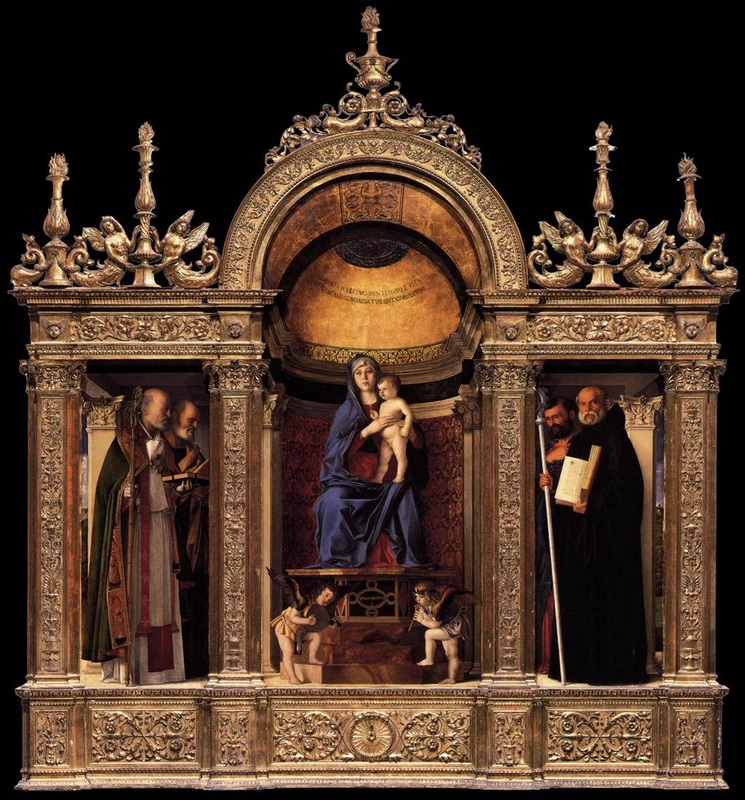Santa Maria Gloriosa dei Frari
Open: Mon-Sat: 9-18 (Last entry at 17.30). Sun: 13-18 (Last entry at 17.30). €3.
Santa Maria Gloriosa dei Frari, often simply called the Frari, is a stunningly beautiful Gothic church, which belongs to the Franciscan Order.
The Franciscans were granted land to erect a church in 1250, but the building was not completed until 1338. So many people flocked to the new church to hear the Franciscans preach that almost immediately the decision was taken to rebuild it on a greater scale, an undertaking which took over a century to complete. The Frari is a brick construction, like all medieval Venetian churches, but one which is highlighted by delicate, decorative elements of white Pietra d'Istria.
The interior takes the form of a Latin Cross. The six bay nave is flanked by lower side aisles. At the crossing are the transepts and beyond lies the square chancel culminating in the apse. The nave is separated from the chancel by the monks' choir, the only example still in situ in Venice. The choir screen was begun by Bartolomeo Bon and completed by Pietro Lombardo (1475). The 124 wooden choir stalls were carved by Marco Cozzi (1468).
The Frari is a treasure-house of art, boasting masterpieces by Titian (who is buried here), Giovanni Bellini, Bartolomeo Vivarini and Donatello. Titian's revolutionary painting of the Assumption of the Virgin Mary (1516-18) adorns the high altar, while Giovanni Bellini's exquisite triptych (1488) can be found in the sacristy. The elaborate and gilded frame was carved by Jacopo da Faenza.
In addition to Titian, the composer Claudio Monteverdi and the sculptor Antonio Canova are also interred (wholly or in part) in the church.
The Frari's campanile is the (joint) second tallest in the city, after that of the Basilica San Marco. It was built by Jacopo Celega and his son Pier Paolo between 1361 and 1396.
The Franciscans were granted land to erect a church in 1250, but the building was not completed until 1338. So many people flocked to the new church to hear the Franciscans preach that almost immediately the decision was taken to rebuild it on a greater scale, an undertaking which took over a century to complete. The Frari is a brick construction, like all medieval Venetian churches, but one which is highlighted by delicate, decorative elements of white Pietra d'Istria.
The interior takes the form of a Latin Cross. The six bay nave is flanked by lower side aisles. At the crossing are the transepts and beyond lies the square chancel culminating in the apse. The nave is separated from the chancel by the monks' choir, the only example still in situ in Venice. The choir screen was begun by Bartolomeo Bon and completed by Pietro Lombardo (1475). The 124 wooden choir stalls were carved by Marco Cozzi (1468).
The Frari is a treasure-house of art, boasting masterpieces by Titian (who is buried here), Giovanni Bellini, Bartolomeo Vivarini and Donatello. Titian's revolutionary painting of the Assumption of the Virgin Mary (1516-18) adorns the high altar, while Giovanni Bellini's exquisite triptych (1488) can be found in the sacristy. The elaborate and gilded frame was carved by Jacopo da Faenza.
In addition to Titian, the composer Claudio Monteverdi and the sculptor Antonio Canova are also interred (wholly or in part) in the church.
The Frari's campanile is the (joint) second tallest in the city, after that of the Basilica San Marco. It was built by Jacopo Celega and his son Pier Paolo between 1361 and 1396.





